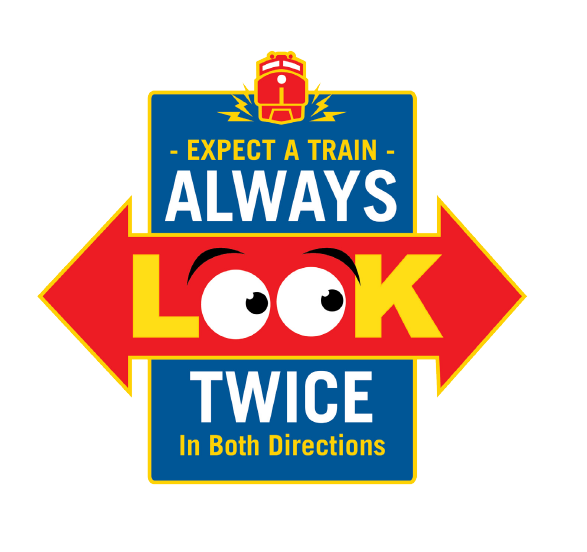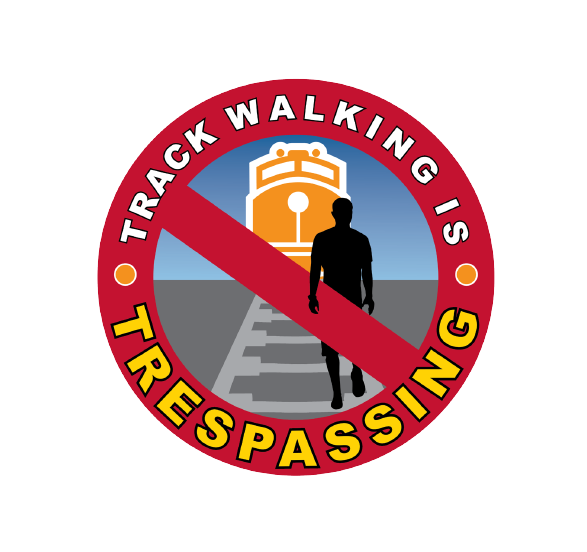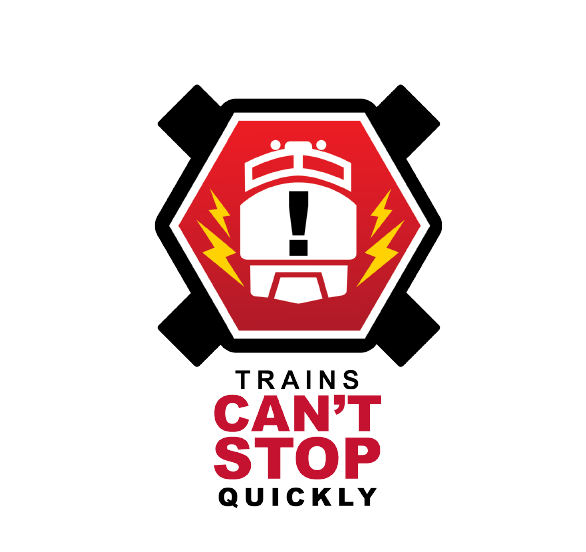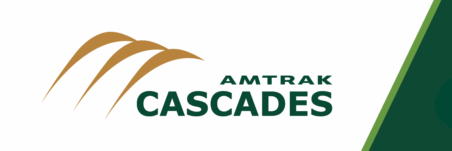Onboard safety
Role of conductors
The conductor is responsible for the safety of the train and all the passengers. The assistant conductor is available to support the conductor. The conductor listens to the train radio dispatch and is in constant communication with the engineer who is driving the train.
Report issues
If you see something say something. Make the conductor aware of any problem or potential problem.
Safety while boarding the train
Keep off the yellow platform edge.
Safety near trains is vitally important. We want to make sure you get where you need to go safely. Don’t take unnecessary risks or fool around on the platform. Please keep an eye out for wheelchairs and luggage carts.
When stepping on and off the train, be sure to make use of all the handrails and maintain three points of contact. Hold at least one handrail while going up and down any steps.
Passenger responsibilities
Each passenger is responsible for complying with directions given by Amtrak personnel.
Look around – maintain situational awareness. Watch your step. Hold onto seatbacks when walking through the train and use handrails at steps.
To avoid conflicts with other passengers:
- Only sit in your seat, the adjacent seat is for another passenger
- Keep your belongings within your seat area
- Keep your feet on the floor or on your footrest
- Use headphones or earbuds with your phone and other mobile devices, and turn off mobile alerts
- If you need to make or receive phone calls, stand in the vestibule between train cars so others are not disrupted by your conversation
Amtrak and local police
Amtrak Police are available to secure and protect, you, trains and stations. Local authorities are called if needed and will board the train along the route in the event of an unruly passenger. This doesn’t happen very often, but you should comply with any police directions when they are present.
Three more tips to help you stay safe around trains
Safety tip #1
Trains can come from either direction. After the first train has passed, a second one may be coming from the opposite direction. So, it’s important to not only wait until the intersection is completely clear, but also wait until the signals have stopped flashing and/or the arms have gone up before crossing the tracks.
Pedestrians have died when they did not realize a second train was coming and they started walking across the tracks before the signals stopped.
Drivers have died when they grew impatient with the gates being down after a train had passed and drove around them, into the path of a second train.

Your life is too important to risk disobeying the signals. Take a few moments to look twice and always wait until the lights, signals and gates are completely clear before you cross any railroad tracks.
Always expect a train
While you may think you know the schedules of trains that run through your neighborhood, a train can travel on the tracks in any direction at any time.
- Passenger and freight trains can run early or late.
- Never stop on the railroad tracks for any reason.
- If you’re waiting in traffic at an intersection with train tracks, stay on your side of the tracks until you can proceed all the way across.
Be cautious around train tracks
If you’re not near a train crossing, it’s particularly important to be alert and cautious around the train tracks, since there are no warning signals.
- Don’t wear headphones when near the tracks
- Stay at least 25 feet back from the tracks
- Always go to designated intersection before crossing the tracks
Safety tip #2
Railroad tracks are private property, not public trails.
It’s illegal to walk on the tracks unless you’re at a designated crossing.

It’s extremely dangerous (and illegal) to walk, run, or drive down the railroad tracks or even alongside them.
Trains travel in both directions and at all times of day and night. You never know when a train might be heading your way.
It’s especially dangerous when you’re wearing headphones or earbuds and can’t hear the signals or train horn.
Not a hangout
Train tracks and railroad trestles are not the place to hang out, take selfies, go for a day hike, or use as diving platforms into the water below.
People have died because they were looking for a shortcut, a secluded fishing hole, or somewhere to have fun.
Your life is too important to risk because you’re seeking an out-of-the-way place to kick back. Stay off the tracks and stay safe.
Photos and train tracks don’t mix
- Trains can’t stop quickly to avoid people or vehicles on the tracks.
- An optical illusion makes it hard to determine a train’s distance from you – and its speed.
- The average train overhangs the track by at least three feet.
- Railroad tracks, trestles, railroad yards and rights-of-way are private property.
- No tracks should be assumed to be abandoned or inactive.
- Other people might think it’s okay to be on the train tracks when they see your photos on social media. You do not want to be responsible for someone else’s death.
Safety tip #3
By the time a train engineer sees you on the tracks it’s usually too late to stop the train. It takes more than a mile for most trains to stop – that’s 18 football fields! If the red lights are flashing and the gates are down, a train is usually less than a minute away.

- If you’re on foot, you probably can’t run across the tracks fast enough to beat it.
- If you’re sitting on the tracks in your vehicle, you may not have enough time to react.
The train is faster, bigger, and more powerful – it can’t stop fast enough to avoid you.
- People have died because they tried to outrun a train.
- Pedestrians have died because they were walking on the tracks and did not realize how fast the train was coming.
Insert video:
Fast-moving trains often give the illusion they are traveling slower than you think. If you’ve ever watched an airplane landing, it often appears to float onto the runway, even though it’s going 150 mph. The same is true for trains. Any approaching train is always closer, and moving faster, than you think. Your life is too important to risk, just to save a few minutes. Don’t take chances when the odds are against you outrunning a train.
Today’s trains are quieter
While you may think you know the schedules of trains that run through your neighborhood, a train can travel on the tracks in any direction at any time.
- Passenger and freight trains can run early or late.
- Never stop on the railroad tracks for any reason.
- If you’re waiting in traffic at an intersection with train tracks, stay on your side of the tracks until you can proceed all the way across.
Intersection blocked by a train
- If you encounter a train that is blocking an intersection for an extended period and not moving, you can report it online.
Train speeds
Who can I contact about train speeds?
The federal government controls most regulations of freight train traffic. For further information contact the federal Surface Transportation Board or the Federal Railroad Administration.
The state Utilities and Transportation Commission has limited regulatory authority over railroads and can be contacted at the link above or via phone at 360-664-1160 or 800-562-6150 (in Washington state).
Grade crossings and grade separations
What are grade crossings and grade separations?
A railroad grade crossing is an intersection where a rail line and a roadway (or pathway) cross one another at the same level. Control devices — such as warning signs, pavement markings and in some location crossing arms and lights — are required at grade crossings just like some intersecting roads need stop signs or traffic signals.
A grade separation is created when a bridge or tunnel is built to allow the roadway to pass over or under the rail line, separating train traffic from all other travel.
Who can I call about grade crossings?
Concerns about traffic backups and delays on the roadway should be directed to the local public works department in the community where the crossing exists.
If you see a dangerous situation, such as a vehicle stuck on the tracks or someone walking along the railroad, call the emergency number on the blue and white sign next to the railroad crossing. Train dispatchers will be able to stop oncoming trains and avoid a tragedy.
If a crossing needs additional warning devices or needs an upgrade, contact the state Utilities and Transportation Commission in Olympia at 360-664-1262.
If crossing warning signals or gates are broken, malfunctioning or need maintenance along the Amtrak Cascades corridor, contact:
- In Washington: BNSF Railway Company at 800-832-5452.
- In Oregon: Union Pacific Railroad at 800-848-8715.
Train safety education
Operation Lifesaver is an international safety program designed to prevent rail-related collisions through educational outreach. To schedule a free presentation about what causes collisions and how to avoid them, call 360-664-1264. To learn more, write Washington Operations Lifesaver, PO Box 47250, Olympia, WA 98504-7250.
Operation Lifesaver is a non-profit education and awareness program dedicated to ending tragic collisions, fatalities and injuries at highway-rail grade crossings and on railroad rights of way. To accomplish its mission, Operation Lifesaver promotes the 3 E’s:
- Education: Operation Lifesaver seeks to educate drivers and pedestrians to make safer decisions at crossings and around railroad tracks.
- Enforcement: Operation Lifesaver works with law enforcement officials to reduce grade crossing and trespassing incidents.
- Engineering: Operation Lifesaver encourages engineering projects to improve public safety.
Washington state has an active Operation Lifesaver program, with volunteers educating the public at schools, county and safety fairs, malls, clubs, and professional organizations.
Stay Back from the Tracks
WSDOT created the Stay Back from the Tracks safety campaign to educate people about the dangers of walking on or near railroad tracks.
Safety rules to remember
It is very important to stay away from railroad tracks.
If you must cross tracks, only do so at designated crossings while following all the safety signage and rules.
Please remember:
- Trains have the right of way
- Never stop on tracks for any reason
- Trains are very heavy and can’t stop quickly—even if they’re traveling at low speeds
- By the time a locomotive engineer can see you or your car, it’s nearly always too late for them to stop to avoid hitting you
- Trains can’t swerve to avoid you or your car because they travel on tracks
- Trains can run on any track at any time. Trains travel in both directions on all tracks—so it’s impossible to predict which direction a train will approach
- Do not wear earbuds or headphones near tracks
Never trespass or cross tracks illegally.
- Railroad tracks are private property, not public trails
- It’s illegal and dangerous to walk on or near tracks unless you’re using a designated crossing
It’s illegal and extremely dangerous to drive around closed crossing gates or to ignore flashing warning lights. Trains are often moving faster than they appear – never try to “beat the train”. Be smart: obey all crossing signs and signals so you and your passengers stay alive and no ice cream is lost.
Electronic safety system can automatically slow or stop trains
Positive Train Control prevents incidents with Amtrak Cascades trains in Washington and Oregon. This system automatically slows or stops trains to avoid train-on-train collisions, excessive speeds, and improper movement of trains. There are three systems seamlessly working together:
- Trackside equipment
- Onboard equipment on the trains
- Back-office computer servers that integrate Amtrak, BNSF, and Union Pacific information
The PTC safety overlay will not prevent incidents involving automotive vehicles or pedestrians on the railroad tracks. That is why you must comply with your safety responsibilities.
